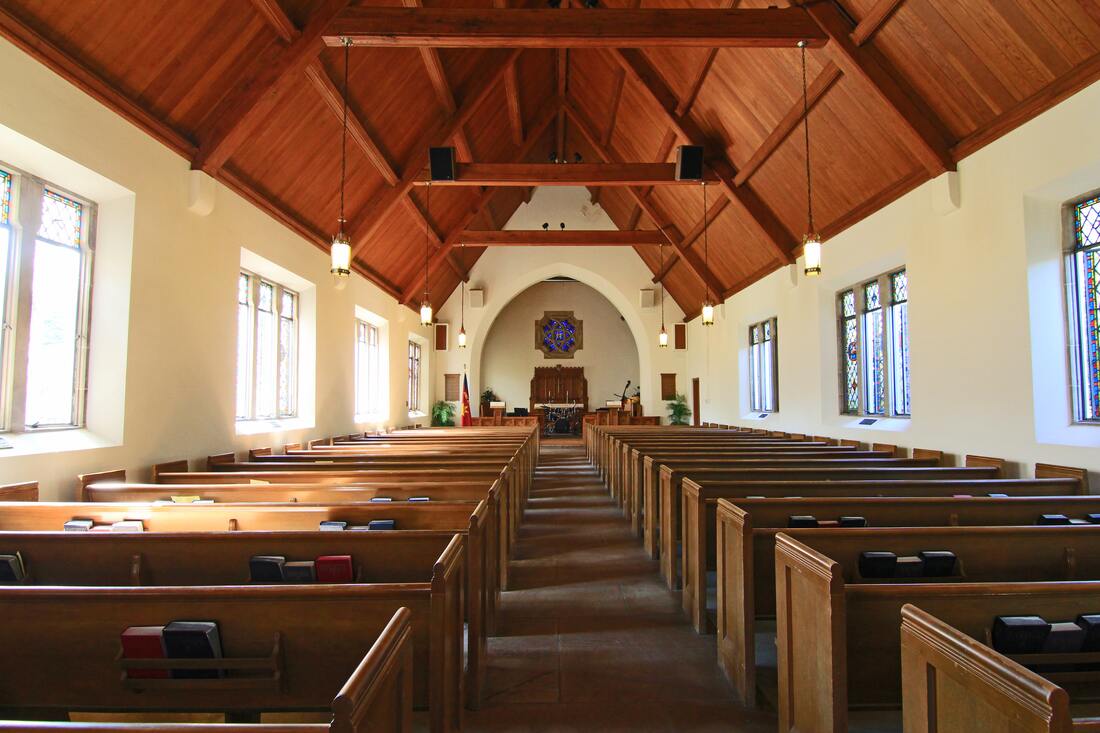|
Last week, Congress approved additional funding for many COVID19 stimulus programs. There are many types of stimulus relief available to business owners, nonprofits, sole proprietors, and independent contractors. Below is a summary of some of the programs: The Paycheck Protection Program The Paycheck Protection Program provides a loan of up to 2.5 month's worth of a small business's or nonprofit's average 2019 payroll. This loan can be used for payroll costs, interest on mortgages, rent obligations, and utility payments. It can be entirely forgivable if an employer maintains its number of full-time equivalent employees and does not reduce the pay of its employees earning less than $100,000 more than 25 percent. For the loan to be forgiven, an employer must use 75 percent of the loan proceeds on payroll costs during the 8-weeks following the funding of the loan. The remaining 25 percent may be used on mortgage, rent and utility payments during the same 8-week period. Sole proprietors and independent contractors can also apply for paycheck protection program loans. The amount these individuals can borrow is an amount equal to the net profit, as shown on their 2019 Schedule C, divided by twelve, and then multiplied by 2.5. Compensation for a sole proprietor or independent contractor is capped at $100,000, so the maximum amount someone netting more than $100,000 will be able to borrow is $20,833. The maximum amount that will be forgiven for sole proprietors and independent contractors is 8/52 of their net profit on their schedule C or $15,385 if they make more than $100,000. Loan applications are made through lenders approved by the SBA, and all application fees are paid for by the SBA. Forgiveness is not automatic and must be applied for with your lender. Any amount not forgiven has a term of two years at 1 percent interest, and the first payment is not due until six months after the loan is made. There are no prepayment fees if you decide to pay any amount off early. Many businesses, nonprofits, and individuals that have had trouble finding a local bank to process a PPP loan should check with fintech companies such as Kabbage, Lendio, Quickbooks to see if they qualify to apply with these companies. Many payment processors, such as Paypal and Square, are also taking PPP applications from their customers. Businesses and individuals who want a PPP loan should not wait to apply. The PPP received an additional $310 billion in funding, but it is likely to be depleted in a matter of weeks. The Economic Injury Disaster Loan Program and Advance Although the EIDL program received additional funding last week, the SBA is currently not taking new applications for EIDL loans. The SBA is currently working through applications it had already received. Small businesses, nonprofits, sole proprietors, and independent contractors who had already applied should have or should expect to see an advance of $1,000 per employee, up to $10,000, deposited to their bank account. The advance is a grant that is not repaid. Small businesses, nonprofits, sole proprietors, and independent contractors who have not applied should check the SBA's website (www.sba.gov) regularly to see if the SBA has resumed taking applications. Relief for Small Businesses with Existing SBA Loans There is good news for small businesses with existing SBA loans. Companies with existing relationships with an SBA Express Lender may be able to access up to $25,000 as an SBA Express Disaster Bridge Loan while waiting for an SBA Economic Injury Disaster Loan (EIDL). The Bridge Loan will then be repaid in full or part by the proceeds of the EIDL. For businesses with existing SBA 7(a), 504, and microloans, the SBA is paying six months of principal, interest, and fees for their loans. Businesses do not need to apply for this assistance; it is automatically provided. Payroll Tax Credits and Deferrals The Employee Retention Credit is a refundable tax credit of 50 percent of up to $10,000 in qualifying wages paid by an eligible employer whose business has been financially impacted by COVID-19. The credit is available to all employers regardless of size, including tax-exempt organizations. To qualify for the credit, one of the following must be true:
The credit is 50 percent of $10,000 of "qualifying wages" for each employee. "Qualifying wages" are:
For employers with more than 100 employees on average in 2019, qualifying wages are only those wages paid to employees who did not work during the calendar quarter.An employer can immediately take the credit by reducing its required deposits of payroll taxes that have been withheld from employees' wages by the amount of the credit due. If the employer's employment tax deposits are not sufficient to cover the credit, the employer may receive an advance payment from the IRS by submitting Form 7200, Advance Payment of Employer Credits Due to COVID-19. The credit is not available for wages paid with a PPP or EIDL loan. By Stacey Cormican Beginning Friday, April 24, 2020, non-essential retail businesses in Texas ordered to shut down during the COVID-19 may reopen to provide "retail-to-go" under the governor's latest order. These retail businesses may offer their products through pick-up, delivery, and by mail. However, they must comply with specific DSHS rules to do so. The rules non-essential businesses must follow in providing "retail-to-go" are: For Employees:
To provide customer pick-ups:
To provide delivery:
To provide items by mail:
The most difficult rule for most employers may be that employees must remain six feet apart while working. Practically, this may mean employers will only be able to bring back portions of their regular staff to work. Read the Governor's executive order here. Download the DSHS guidance below.
Most Nonprofits Will Qualify for Emergency Economic Injury Grants of up to $10,000.A part of the CARE Act allows nonprofits to apply for Economic Injury Disaster Loans and receive Emergency Economic Injury Grants of up to $10,000 in three days. To access the grant, a nonprofit must apply for an SBA Economic Injury Disaster Loan (EIDL) and then request an advance. The advance does not need to be repaid under any circumstance and should be considered a grant. Nonprofits can use the advance (grant) to pay for expenses that it could have paid had the disaster not occurred, including payroll, debts, rents, and mortgage payments. Almost all nonprofits with either (1) an effective ruling letter from the IRS granting a tax exemption under sections 501(c), (d), or (e) of the IRS Code of 1954 or (2) that can provide satisfactory evidence that it is a nonprofit under state law can apply for and received the grant. The only disqualified nonprofits are those that are principally engaged in teaching, instructing, counseling, or indoctrinating religion or religious beliefs or that primarily engage in political or lobbying activities. The nonprofit must also have been in operation since January 31, 2020. The SBA has created a streamlined application for the EIDL, which can be found here: https://covid19relief.sba.gov/#/. To apply for the Emergency Economic Injury Grant, you must check the box on the fourth screen of the application that says, "I would like to be considered for an advance of up to $10,000". The SBA has a goal of providing the advance in three days by direct deposit to your bank. If you have questions about whether your nonprofit qualifies or about the application, contact your legal counsel or the SBA Customer Center at 1-800-877-8339 or [email protected]. About the AuthorStacey Cormican offers Bible-based legal counsel and services to businesses, nonprofits, churches and families. She can be reached at [email protected] or 210-504-8150 Parents may be able to take 12 weeks of paid leave to care for kids home from school and day care.Under the Families First Coronavirus Response Act, parents may be able to take up to 12 weeks of paid leave to care for children whose school or child care provider is closed or unavailable for reasons related to COVID-19.
To qualify to take the full 12 weeks of leave, a parent must work for a business with fewer than 500 employees and have worked there for at least 30 days. Parents who have worked for less than 30 days for their company may still be able to take two weeks of paid leave. Businesses with fewer than 50 employees may not have to give parents leave if giving the paid leave would "jeopardize the viability of the business as a going concern." Paid leave is available from April 1, when the law goes into effect, until the end of the year. A parent can take paid leave only if they cannot work at their regular worksite or telework because they need to care for a child who is home from school or child care. If a parent's employer lets them do their work outside their regular hours, such as early in the morning or late at night, then they can work and won't qualify for paid leave. Employers can require a parent to provide proof that their child's school or child care is closed due to COVID-19. Examples of documentation are closure or unavailability notices from a school, daycare, or babysitter that are posted on a website, published in a newspaper, or emailed to a parent. Parents working both full- and part-time may take leave. Parents working part-time may take leave for the average number of hours each day that they would typically work during a two-week period. Parents working on-site or teleworking may be able to take leave in small chunks instead of all at once if their employer agrees. For example, if an employer agrees, a parent could take leave on Mondays, Wednesdays, and Fridays or from 8:00 to noon each day. Parents taking leave to care for a child home from school or child care will not get paid at their full rate. Instead, a parent on leave will receive the greater of either two-thirds of their regular pay or two-thirds of the federal or their state or local minimum wage. There is also a cap on the total pay parents can receive while on this type of leave. Parents will get no more than $200 per day or $1000 each week they are on leave. Eligible parents who are denied leave should contact a knowledgable attorney or the Department of Labor. Governments must follow certain rules when issuing orders that affect Constitutional rights.
|
AuthorStacey Cormican offers Bible-based legal services to businesses, nonprofits, churches and families. ArchivesCategories |
||||||







 RSS Feed
RSS Feed